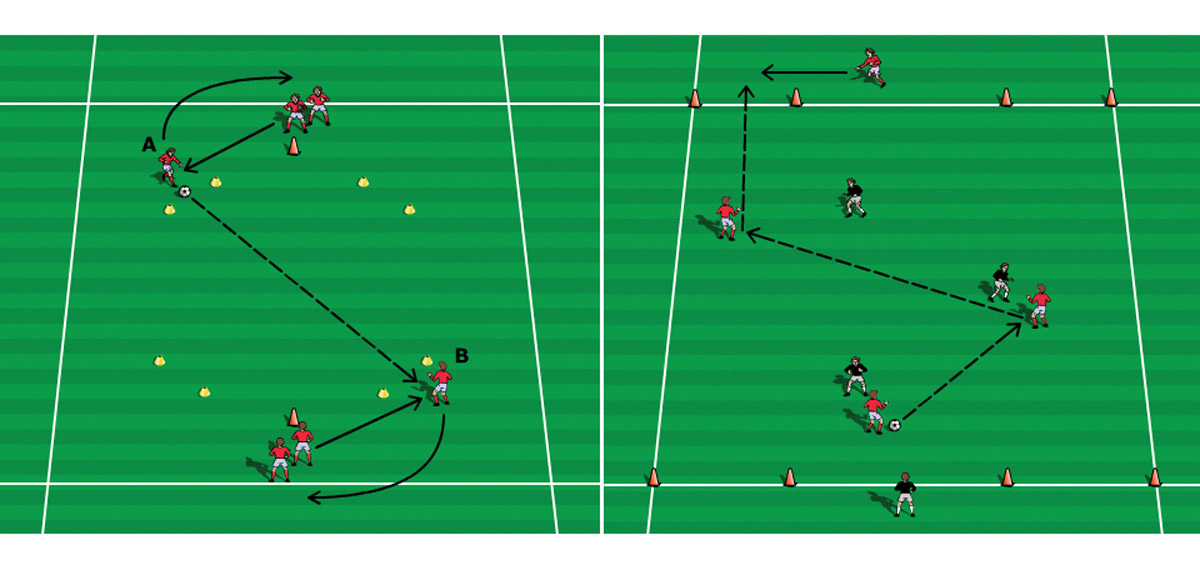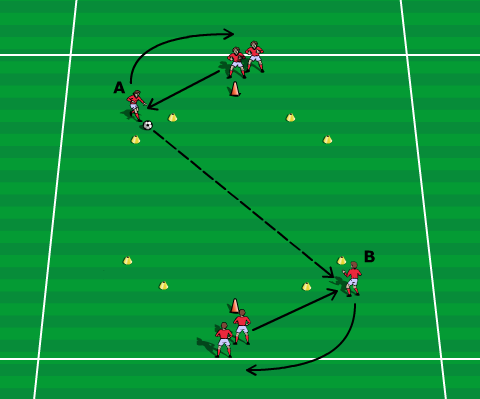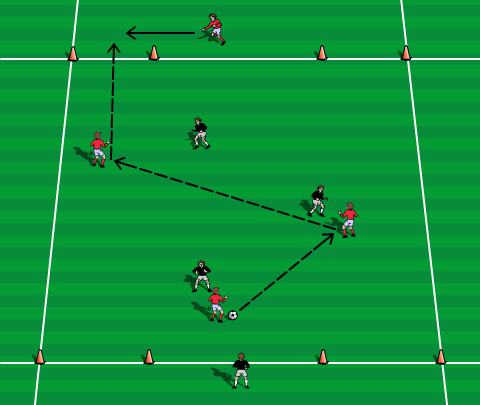

Practice timing of the runs – it can drastically change your game! (FREE SESSION)
EVERY CHANGE IS THE NEW START –
STAY CONFIDENT
With your coaching philosophy comes your team’s style of play, team’s shape, organized lines, prepared movements on and off the ball. One thing common for all this to combine into successful performance is – players’ commitment. They understand the concept; they need to transfer performance to the game.
If a coach believes in his ideas, he must be patient, work smart and be dedicated to achieve the results. You recognize the potential of your team and where you can take it – just keep working. Don’t change concepts after the first fail or poor performance. Every change is the new start. It will come, it must come, just be confident and believe.
TIMING OF THE RUN –
MAKES DIFFERENCE IN THE GAME
A good hint for your practice is to work on players’ off the ball movement. It does make a difference. Timing of the run is a moment in the game when player gains advantage for his team. That run, if it’s made in perfect time, creates space for a teammate to receive the ball, takes the opponent from the space where the other player receives the pass, anticipates the pass or makes a disbalance of defending shape. It doesn’t need to be sprint run; many times it is a few steps movement in the sight of the player with the ball, where the pass can be received without the interception of the opponent player.
YOUR COACHING PERFORMANCE CAN BE DRASTICALLY CHANGED
Timing of the run can be improved in various exercises and games. Identifying areas of improvement has the greatest importance in your every day coaching. Polishing these details, your performance can change drastically. Coach will be satisfied and motivated as well as his players. The appreciation will reflect in positive, learning oriented and willing atmosphere within the group. The idle environment to work in!
HOW TO MAKE YOUR PLAYERS TO RECEIVE THE BALL IN PERFECT TIMING
Here is an example of the training session how to propose and encourage players to create movement to receive the ball in perfect timing. Session is designed to have unopposed practice as a warm up and learning time where coach will demonstrate training concept and objectives. And the main part, small sided game where players will perform with actual pressure against the opponent.
ORGANIZATION
Players are divided in two groups 20 meters away, like on the diagram above. Players receive and pass the ball to each other through the small gates. After the pass, they go back to their group.
COACHING POINTS
Players must receive the ball at the moment when they arrive behind the gate. Not before and not after. If they come too fast, they will have to wait for the ball to arrive, finding themselves waiting in the space and opponent will have time to mark them. If they come late, they will not be composed to receive the ball and to continue the action in time before the opponent approaches. Accurate and controlled pass to allow passing combination to flow, just like in the match.
VARIATIONS
First players pass the ball only from the right side to practice the right foot.
Passing from the left side only to practice the left foot.
Players individually decide and choose on which side they want to receive the ball. In this progression, player with the ball must increase awareness and anticipate the situation in order to successfully continue the action.
ORGANIZATION
In area 25×30 meters players are divided in two teams. On the both ends of the ground place two small goals like on the diagram above.
Position one player behind the two small goals. Players inside the area are playing the game with the aim to score a goal by passing to a target player through one of the small gates. Player that receives the ball enters the ground, becoming field player changing the role with his teammate who passed the ball. When the opponent team wins the ball, they score the same way on the other side.
Note:
The ball can be played to a player behind the gates at any time, but the goal is scored and players exchange roles only when the ball goes through one of the two gates.
COACHING POINTS
In order to receive the pass for the goal, player must anticipate the action and read the situation from his players inside the area. He can also be the trigger who will lead the action and receive the crucial pass. Communication skill should be encouraged all the time.
VARIATIONS
Size of the playing area and number of players can vary.
If the size of the ground is bigger, three or four mini gates can be placed at the end line, always with one player less behind them. For example, if there are three gates, position two players behind them to receive the pass for the goal.
With the older age groups, players to be placed in their positions that they perform in the games. Players behind the gates can be target players or the areas to fill in can be weak part of the opponent’s team.




